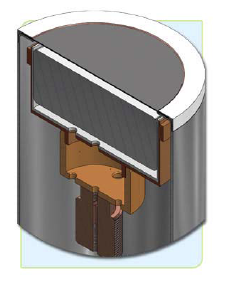High Purity Germanium Gamma Spectrometer
HPGe γ The energy spectrometer is used for: γ Nuclide analysis, including U-238, Th-232, Ra-226, K-40, Cs-137, I-131, Co-60 and other nuclide in soil, water, biology, food, aerosol and other samples, is widely used in environmental protection, nuclear power station, nuclear industry, health, customs, food and drug administration, quality supervision and inspection and other units.
Canberra offers many types of detectors. Applying suitable technologies in materials and manufacturing processes, Canberra provides the best detectors for a wide range of applications. P-type germanium and n-type germanium are used, and diffusion, ion implantation, barrier contact and other processes are used to achieve the design and manufacture of various detectors.
HPGe γ The energy spectrometer is used for: γ Nuclide analysis, including U-238, Th-232, Ra-226, K-40, Cs-137, I-131, Co-60 and other nuclide in soil, water, biology, food, aerosol and other samples, is widely used in environmental protection, nuclear power station, nuclear industry, health, customs, food and drug administration, quality supervision and inspection and other units.
Canberra offers many types of detectors. Applying suitable technologies in materials and manufacturing processes, Canberra provides the best detectors for a wide range of applications. P-type germanium and n-type germanium are used, and diffusion, ion implantation, barrier contact and other processes are used to achieve the design and manufacture of various detectors.
HPGe γ Spectrometer composition:
(1) Hardware: high purity germanium detector + multi-channel analyzer + cryostat + lead chamber;
(2) Software: spectrum acquisition software + spectrum analysis software + passive efficiency calibration software
- A variety of detectors are available, including p-type coaxial, n-type coaxial, wide energy type, well type germanium detector, etc. the crystal structure and applicable energy range are different
- Multiple refrigeration modes: liquid nitrogen refrigeration or electric refrigeration
- HPGe provides superior peak resolution performance compared to all other detector technologies
GB / T 7167-2008 germanium γ Test methods for radiation detectors
GB / T 11713-2015 high purity germanium γ General method for energy spectrum analysis
GB / T 11743-2013 determination of radionuclides in soil γ Energy spectrum analysis method
GB / T 16140-2018 determination of radionuclides in water γ Energy spectrum analysis method
GB / T 16145-2020 determination of radionuclides in biological samples γ Energy spectrum analysis method
HJ 1127-2020 environmental samples in emergency monitoring γ Technical specification for nuclide measurement
HJ 1129-2020 in situ high purity germanium spectrometer for measuring soil γ Nuclide technical specification
HJ 1149-2020 ambient air aerosol γ Determination of radionuclides - filter press_ γ Energy spectrum method
Detector TypeBEGe: Broad Energy Germanium Detector The unique capabilities of Canberra's broad energy region (BEGe) germanium detectors covering the energy range from 3keV to 3MeV.Its resolution in the low-energy region is equivalent to a low-energy germanium detector, and its resolution in the high-energy region is equivalent to a high-quality coaxial detector. |
|
Model | Area (cm2) | Length (mm) | Efficiency (≥) | 能量分辯力(eV-FWHM) | End window diameter (mm) | ||
|
|
|
| @5.9keV | @122keV | @1332keV |
|
… | … | … | … | … | … | … | … |
BE5030 | 50 | 30 | 48% | 450 | 750 | 2100 | 89 |
BE6530 | 65 | 30 | 60% | 500 | 750 | 2200 | 102 |
Standard coaxial germanium detector (Sege)
Canberra's coaxial germanium detectors can be transported and stored at room temperature. The detector is kept cool to best maintain long-term stability. Like all germanium detectors, it must be cooled during use to avoid overheating and leakage current. It is suitable for spectral applications with energies above 40 keV to 10 MeV.
Model | Relative efficiency (≥) | Energy resolution (keV) | Fengkangbi | FWTM/FWHM | End window diameter (mm) | |
@122keV | @1332keV | |||||
… | … | … | … | … | … | … |
GC4018 | 40% | 0.9 | 1.8 | 62 | 1.90 | 76 |
GC4020 | 40% | 1.1 | 2.0 | 54 | 2.00 | 76 |
… | … | … | … | … | … | … |
GC10023 | 100% | 1.3 | 2.3 | 74 | 2.00 | 95 |
Reverse polarity coaxial germanium detector (Rege)
The reverse polarity detector (Rege) is geometrically similar to other coaxial germanium detectors, with only one important difference: the electrode of the reverse polarity detector is opposite to the common coaxial detector, that is, the p-type electrode (ion implanted boron) is outside, and the n-type contact (diffused lithium) is inside. This arrangement of electrodes has two advantages: window thickness and resistance to radiation damage. It is suitable for spectral applications with energies from 3kev to 10MeV.
Model | Relative efficiency (≥) | Energy resolution (keV) | Fengkangbi | FWTM/FWHM | End window diameter (mm) | |
@122keV | @1332keV | |||||
… | … | … | … | … | … | … |
GR4522 | 45 | 1.1 | 2.2 | 54 | 2.00 | 83 |
GR5021 | 50 | 1.1 | 2.2 | 58 | 1.90 | 83 |
… | … | … | … | … | … | … |
GR10026 | 100 | 1.5 | 2.6 | 56 | 2.10 | 95 |
Detector type
Germanium well detector
The Canberra germanium well detector provides maximum efficiency when counting small samples because the samples are actually surrounded by active detector material. The Canberra germanium well detector is made into a blind hole, leaving at least 5mm of active detector material at the bottom of the well. Therefore, the geometry of the count is approximately 4 π.
Model | Area (cm2) | Well diameter (mm) | Effective volume (CC) | Energy resolution (keV) | |
@122keV | @1332keV | ||||
… | … | … | … | … | … |
GCW4022 | 40 | 10 | 190 | 1.2 | 2.2 |
GCW4023 | 40 | 16 | 200 | 1.4 | 2.3 |
Extended range germanium detector (xtra GE)
Canberra's extended range germanium detector is a coaxial germanium detector with a unique thin window contact on the front surface, which extends the useful energy range down to 3kev.
Model | Relative efficiency (≥) | Energy resolution (keV) | Fengkangbi | End window diameter (mm) | ||
@22keV | @88keV | @1332keV | ||||
… | … | … | … | … | … | … |
GX4020 | 40 | 1.0 | 1.1 | 2.0 | 54 | 76 |
GX4518 | 45 | 0.9 | 1.0 | 1.8 | 63 | 83 |
… | … | … | … | … | … | … |
GX8023 | 100 | 1.3 | 1.4 | 2.3 | 70 | 95 |
Low energy germanium detector(LEGe)
Low energy germanium detector (lege) is produced by using thin front contact, and the rear contact is smaller than the full area, so the detector capacitance is smaller than that of planar equipment of similar size, and its noise is lower, so the resolution is better in the low and medium energy range. It is suitable for spectral applications with energy above 3kev.
Model | Area(cm2) | Thickness (mm) | Be window thickness(mm) | Energy resolution (keV) | Front amplifier type | |
@5.9keV | @122keV | |||||
GL0055PS | 50 | 5 | 0.05 | 145 | 500 | PO |
GL0110R | 100 | 10 | 0.075 | 180 | 500 | RC |
… | … | … | … | … | … | … |
GL3825R | 2800 | 25 | 0.5 | 475 | 750 | RC |
Multichannel analyzer
Dsa-lxtm digital multi-channel analyzer
|  |
Lynxtm digital multichannel analyzer
| 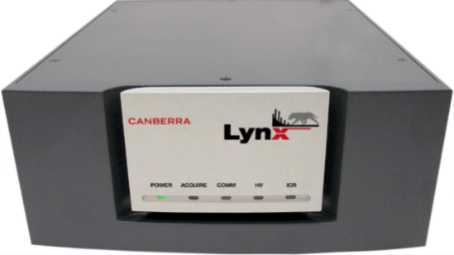 |
Inspecortm 2000 digital multichannel analyzer
Inspector 2000 instrument is a high-performance portable spectral
| 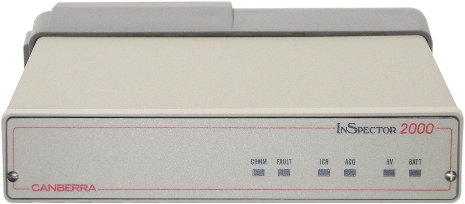 |
Low temperature thermostat series
Traditional liquid nitrogen refrigeration system
| 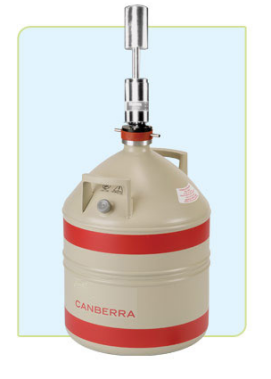 |
Cryo cycle II liquid nitrogen refrigeration system
Cryo cycle II liquid nitrogen condensation refrigeration system is a "hybrid" cryostat, because it combines the advantages of electric cooling and the reliability of liquid nitrogen. With cryo cycle II cryostat, LN2 power supply can keep the detector at low temperature for up to one week in case of power failure.
| 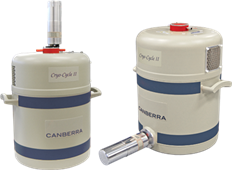 |
Cryo pulse 5 electric refrigeration cryostat
Cryo pulse 5 electric refrigeration cryostat is an electric cryostat used for HPGe radiation detectors. It is a mature and reliable technology using pulse tube cooler, which is widely used in military and space fields.
| 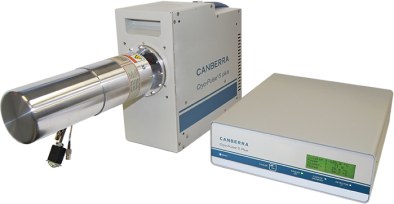 |
Low background lead chamber
|  |
Software System
Genie 2000 leading spectrum measurement and analysis software
Characteristic:
| 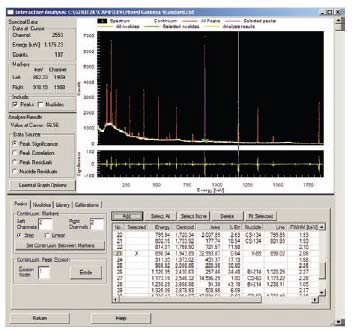 |
ISOCS / Lab SOCS: passive efficiency calibration software
|  |







